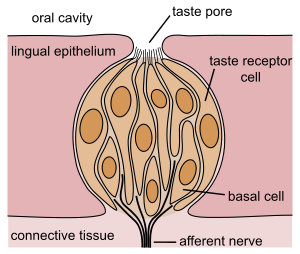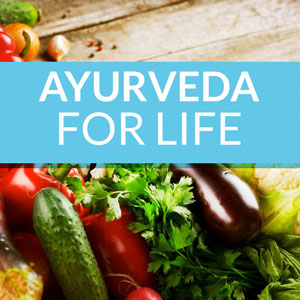A User-Friendly Guide to the Concept of 6 Tastes
Natural Cravings Cure
Every one of us occasionally wonders if there is a way to cure cravings. I do, too! That’s why I wrote a post on 5 ways to avoid cravings using ayurveda last year.
But in reality our body experiences cravings when something is missing, whether it is a physical micro-element, a kind emotion, or a fulfilling role in the society. For example, according to ayurveda, Love and Compassion are sweet so if you are missing one of them in your day-to-day life, you might experience cravings for sweets to make up for the missing piece. Your body has to get it one way or the other to stay balanced. One of the strategies to stay balances and avoid craving is to include all 6 Ayurvedic tastes into every meal. In my experience, it looks easy on paper but might be confusing in real life. The concept of taste (rasa) means more than just flavor. It is “a food’s vital fluid or elixir; it reflects the enlivening effect taste has on human physiology” says Scott Gerson, M.D., Ph.D., medical director of the National Institute of Ayurvedic Medicine in New York. The six tastes are Sweet, Sour, Salty, Bitter, Pungent, and Astringent.
According to Ayurveda, a healthy balance of the six rasas creates harmony in the body while the predominance of one of the tastes can throw the entire system of balance. Ever feel sleepy and heavy after a hearty portion of tiramisu? This is the sluggish Kapha taking over because you just loaded up on Sweet without balancing it out. Each taste feeds our mind, body, and senses in a own unique way. The more you listen to your body and increase your body awareness, the more you will tune into the tastes it naturally desires and tap into the body’s innate wisdom regarding food and nutrition.
While rasas of certain foods are easy to guess, such as honey (Sweet), other tastes might leave you guessing. For example, would you have thought that walnuts and popcorn are Astringent or that most grains are Sweet?
To get the most benefit out of Ayurvedic knowledge one needs to have an understanding of the concept of tastes in Ayurveda. Today I will try to provide a user-friendly map to 6 tastes, their qualities, effects on the body, some common foods that belong to each taste, and also some general ideas of how to include them in your day to day menu without making it a daunting task.
Qualities: Sweet taste is heavy, oily, moist, and cooling by nature
Effects on doshas: V-, P-, K+. Eaten in moderation, Sweet foods enhance strength, longevity, and stability. Sweet taste naturally increases moisture and weight in the body, if you overindulge. Sweet also relieves burning sensations and thirst, and has beneficial effects on the skin and hair. It is a good choice if you are feeling ungrounded and agitated.
Sour:
Qualities: Sour Taste is hot, light, and moist (oily) by nature.
Effects on doshas: V-, P+, K+. Sour stimulates digestion, helps circulation and elimination, nourishes and energizes the body, strengthens the heart, relieves thirst, maintains acidity, sharpens the senses, and helps extract minerals such as iron from food. In excess, it may result in indigestion.
Sources: It is commonly found in citrus fruits (such as lemon and limes), sour milk products (like yogurt, cheese, and sour cream), and fermented substances (including wine, vinegar, pickles, sauerkraut, and soy sauce).
Salty:
Qualities: Salty taste is heavy, and moist (oily) by nature.
Effects on doshas: V-, P+, K+. Salty taste improves the flavor of food, stimulates digestion, lubricates tissues, maintains mineral balance, aids in the elimination of wastes, and calms the nerves. Salty taste has a drying quality in the mouth, but it is moistening internally and has a water retaining quality. Due to its tendency to attract water, it help to balance out electrolytes and improves the radiance of the skin.
Sources: It is found in any salt (such as sea salt and rock salt), sea vegetables (like seaweed and kelp), and foods to which large amounts of salt are added (like nuts, chips, and pickles).
Pungent:
Qualities: Pungent taste is the hottest of all tastes, and also possesses dry and light qualities.
Effects on doshas: V+, P+, K-. In small amounts, Pungent taste stimulates digestion, clears the sinuses, promotes sweating and detoxification, aids circulation, improves metabolism, and relieves muscle pain. It also increases clarity and perception.
Sources – It is found in certain vegetables (such as chili peppers, radishes, garlic, and onions), and in spices (like black pepper, ginger, and cayenne, mustard).
Bitter:
Qualities: Bitter is light, cooling, and dry by nature.
Effects on doshas: V+, P-, K-. It is the most absent taste in the Western diet. While Bitter taste is rarely eaten alone, it stimulates the appetite and helps bring out the flavor of the other tastes. Bitter taste is a powerful detoxifying agent, and has antibiotic, anti-parasitic, and antiseptic qualities. It is also helpful in reducing weight, water retention, skin rashes, fever, burning sensations and nausea.
Sources – It is found in green leafy vegetables (such as spinach, kale, and green cabbage), other vegetables (including zucchini and eggplant), herbs and spices (like turmeric, fenugreek, and dandelion root), coffee, tea, and certain fruits (such as grapefruits, olives, and bitter melon).
Astringent:
Qualities: Astringent is dry, cooling, and heavy by nature. It is the least common of all 6. Astringent taste is classified more in relation to its effect on the tongue than its actual taste. It creates a puckering sensation in the mouth (such as cranberries) or a dry, chalky feeling (such as many beans). Foods like broccoli or cauliflower have a mildly Astringent taste that is less detectable.
Effects on doshas: V+, P-, K-. Astringent is thought to soothe ulcers and improve clotting. Too much makes a person physically and emotional inflexible.
Sources: It can be found in legumes (such as chickpeas and lentils), fruits (including cranberries, pomegranates, green bananas and dried fruit), vegetables (such as, alfalfa sprouts, broccoli, cauliflower, artichoke, asparagus, green beans and turnip), grains (such as rye, buckwheat, and quinoa), spices and herbs (including turmeric and marjoram), coffee, and tea.
Ayurvedic nutrition recommends including all 6 in each meal, while favoring those tastes that balance out your particular constitution and seasonal changes. Keep the concept of tastes and their effects on your body in the back of your mind to address any negative emotions or physical complaints such as being tires or irritated
Related articles
- 5 Herbs To Meditate Better and Stay Young (realyoganyc.wordpress.com)
- Ayurveda Made Easy (realyoganyc.wordpress.com)
- Real Ayurvedic Skincare (realyoganyc.wordpress.com)










